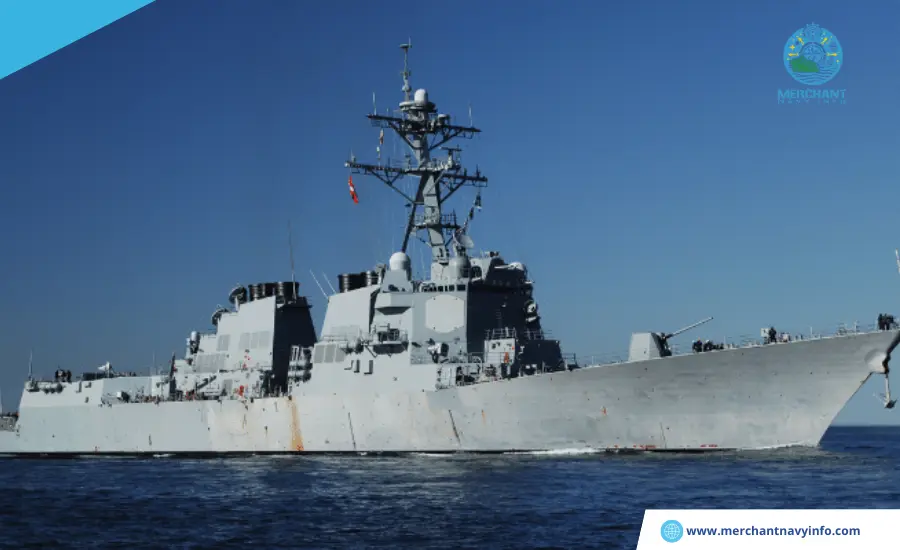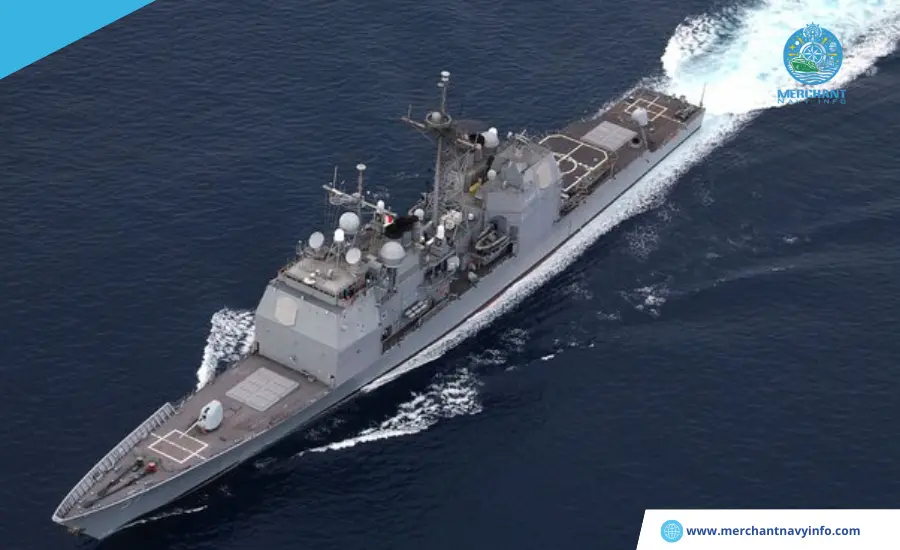
Warships comprise an essential part of surface fleets worldwide. They showcase diverse sizes, capabilities, and specific roles and functions. The extensive oceans act as a stage where naval forces globally reveal strategic designs and technological innovations that distinguish their warships. Let’s have a look at the comparison of cruiser vs destroyer.
The Evolution of Cruisers Vs Destroyers

Cruisers and destroyers appeared as prevalent vessels employed by numerous navies within various warship types.
The considerable size of cruisers, along with their high speed and vast cruising ranges, distinguishes them. On the other hand, destroyers are known for their speed and maneuverability, and they are designed to escort larger vessels within fleets or convoys.
Historically, these two classes of warships held separate roles within naval fleets. However, the maritime landscape has experienced a profound transformation fueled by technological advancements, steering in a new era of naval warfare. The intake of advanced automation, cutting-edge weaponry, and state-of-the-art sensor suites has redefined the traditional features of cruisers and destroyers, blurring the once clearly defined lines between them.
Simultaneously, destroyers have developed from their original role as torpedo boat destroyers into multifaceted platforms with state-of-the-art weaponry, boasting unparalleled skill and speed.
Despite the convergence in technological elements, these two warship types differ considerably in their roles and functions. To comprehend their contributions on the battlefront, let us delve into the basic distinctions between cruisers and destroyers.
A Historical Look at Cruisers Vs Destroyers

In contemporary naval operations, cruisers and destroyers are formidable warships. Each one has a remarkable historical trajectory and separate roles in warfare. The term “cruiser” originates in the age of sail. The history of cruisers began with Britain’s intro of unarmored ships in the mid-19th century to safeguard commerce.
By the 1870s, armoured, belted, second-class, and light cruisers joined the scene. The Imperial Russian Navy’s General-Admiral, which ended in 1874, is taken as the first true armoured Cruiser.
Conversely, destroyers were designed as “torpedo boat destroyers” in 1885. During World War I, they matured to guard battleships from torpedo dangers and became super torpedo boats. They served as important scouts for enemy fleets.
Role and Responsibilities of Cruiser vs Destroyer

Cruisers and destroyers display significant differences in their functions within naval operations. Cruisers were conceived for long-range and independent missions. They often function as command ships safeguarding fleets.
Their skill and extended operational range make them ideal for covering broad areas and collecting necessary intelligence on enemy movements. In addition to their scouting responsibilities, their vast tasks encompass naval gunfire support, escorting aircraft carriers and troop transport.
On the other hand, destroyers protect the fleet from short-range attackers. They focus on antisubmarine warfare, anti-aircraft defence, and escort missions. Beyond combat roles, many destroyers are equipped for command-and-control functions and coordinate fleet movements. They even participate in search-and-rescue operations.
Size and Design
A significant distinction between cruisers and destroyers lies in their size. Cruisers are typically bigger and often the gigantic ships in the fleet. These ships feature a modern size of about 180 meters long and a displacement of 7,000 to 10,000 tons.
The 1992 Washington Treaty set a limit of 10,000 tons on cruisers. Many violated this limit, leading to their abandonment shortly before World War II.
Armament
Cruisers and destroyers bring firepower to the battlefront, but their strengths differ. Cruisers pack a heavier punch, boasting larger calibre main guns, missile launchers, and a wider range of anti-aircraft and anti-ship weaponry.
Independence of Cruiser vs Destroyer

Cruisers, designed for open-sea operations and installed with substantial firepower, can operate unassisted.
Traditionally, cruisers date back to the 17th century. They were known as independent warships. They were involved in scouting, commerce protection, or raiding. Even modern cruisers maintain this independence. In contrast, destroyers are designed to operate with other vessels, escorting bigger fleets or convoy ships to defend against various threats.
Destroyers are intricately crafted for combined naval operations, functioning with other vessels.
Their main role involves escorting larger fleets or convoy ships. Also, orchestrates a protective shield against various threats.
Speed and Maneuverability of Cruiser vs Destroyer
Originally restrained in speed by their size, cruisers have undergone notable evolution. Modern guided missile cruisers can attain maximum speeds of more than 30 knots in the current era. In addition to their exceptional speeds, cruisers are well-known for their exceptional manoeuvrability, which allows them to navigate swiftly and responsively in diverse maritime conditions.
In contrast, destroyers have always demonstrated higher cruising speeds, profiting from their compact size. Often reaching a maximum of 35 knots. An excellent example is the French Navy’s Le Terrible, a big destroyer of the Le Fantasque class. It notably holds the record for the fastest destroyer, attaining an impressive speed of 45.25 knots.
Crew Members
Cruisers, characterized by their substantial size, demand a bigger complement of crew members to effectively manage complicated systems and weaponry while deployed in foreign waters.
For example, the US Navy’s Baltimore-class cruisers house a vast crew of 80 officers and 1500 crewmen during wartime operations. Nevertheless, the landscape of naval operations has transformed due to remarkable strides in automation technology, which has significantly changed crew requirements for contemporary cruisers.
In contrast to their historical images, modern destroyers exemplify this evolution. They typically accommodate crews of approximately 300 personnel. A premium illustration of this is observed in the US Navy’s cutting-edge Arleigh Burke-class destroyers. It boasts an impressive crew size of about 300 sailors.
Endurance at Sea
Crafted with an emphasis on extended operational endurance. Cruisers sustain lengthy periods at sea, making them well-suited for extended-range patrols and missions.
Their intrinsic design incorporates a robust capacity to stock fundamental provisions. These items enable sustained operations over extended periods while deployed at sea, including but not limited to food, fuel, and various supplies. In sharp contrast, destroyers, characterized by their smaller size, exhibit a more limited endurance profile.
Cost and Maintenance of Cruiser vs Destroyer

Cruisers typically take the spotlight in naval vessels as larger and more intricate than their destroyer counterparts. This inherent complexity often translates into higher construction and maintenance costs. The financial cost of cruisers is intricately tied to different factors. These include the complexity of weapon systems and the comprehensiveness of radar and sensor suites.
Conversely, destroyers are characterized by their smaller, more targeted mission objectives. They often present a more cost-effective alternative. Nonetheless, it is important to note that costs can rise, especially when integrating advanced technology and weapon systems, even within destroyers.
A case in point is the United States Navy’s advanced Zumwalt-class guided missile destroyers. The combined expenditure for these three vessels, which includes research and development, reportedly amounted to around $22.4 billion.
Fleet Strength
Regarding cruiser fleet strength, the United States persists in asserting its dominance as the world’s leading operator. However, China is now occupying the second spot.
Current data from the International Institute for Strategic Studies shows that the US Navy commands a fleet of 19 operational cruisers, a notable lead over China’s People’s Liberation Army Navy (PLAN). Japan follows with three cruisers in its control. The United States Navy again emerged as the global frontrunner regarding destroyer capability.










